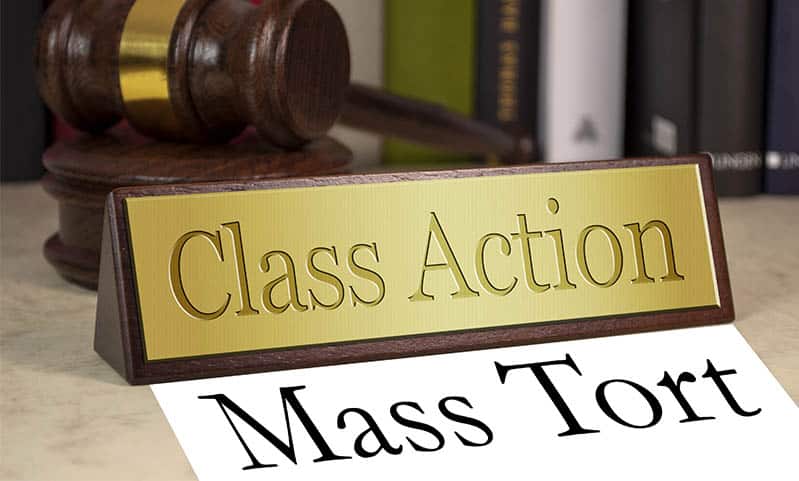Collective Justice: The Power and Refine of Class Action Lawsuit Claims
Wiki Article
Understanding Course Action Claim: An Overview for Lawyers
Course activity lawsuits have actually come to be an important component of the lawful landscape, allowing for the debt consolidation of numerous insurance claims right into a solitary activity. By delving into the details of course action legal actions, this overview furnishes attorneys with the understanding and devices required to efficiently navigate this intricate area of legislation.The Basics of Class Activity Lawsuits
Course activity suits are a lawful device utilized to consolidate similar cases from a group of people right into a single suit, offering a cost-effective and effective technique to looking for justice and resolution. This kind of claim allows a representative complainant, acting on part of the whole course, to bring a case versus an offender that has actually presumably triggered harm or broke the civil liberties of numerous individuals.The fundamental requirements for bringing a class action suit consist of numerosity, commonality, typicality, and adequacy of representation. Numerosity refers to the fact that the course have to be so huge that joinder of all participants would certainly be impractical.
Course action claims can be useful for both accuseds and plaintiffs. For complainants, it allows them to pool their resources and share the prices and risks related to lawsuits. When they are up against huge companies or entities, it likewise provides a degree having fun field. For accuseds, it offers the chance to effectively settle multiple cases in a single claim, staying clear of the requirement to resist numerous specific legal actions.
Identifying and Assessing Possible Course Participants
After establishing the basic requirements for a course action claim, the next action is to recognize and evaluate prospective course members. If they meet the required criteria., this process entails establishing that may be component of the course and evaluating their cases to figure out.To determine prospective class participants, lawyers typically perform comprehensive research and collect pertinent details. This might include examining records, performing interviews, and checking out records to determine people or entities that might have been affected by the supposed misbehavior. It is essential to establish a clear and detailed listing of potential course participants to make sure that all affected parties are consisted of in the legal action.
When prospective class participants have actually been determined, the following action is to assess their insurance claims. If they fulfill the legal demands for class certification, this involves examining the qualities of each individual insurance claim to identify. Legal representatives must very carefully examine the truths, proof, and lawful theories of each possible class member's insurance claim to make sure that they have a practical instance.
Evaluating prospective course participants also involves identifying whether they fulfill the class meaning and have endured similar damage as a result of the defendant's actions. This requires contrasting the truths and conditions of each prospective class member's situation to the accusations and lawful theories put forth in the legal action.
Navigating the Course Qualification Refine
To successfully navigate the class qualification procedure, legal representatives should carefully follow the step-by-step needs established forth by the court. Class certification is a crucial action in a class activity lawsuit, as it identifies whether an instance can continue as a class action, representing a group of individuals who have similar insurance claims against a defendant. The process involves pleasing certain standards, such as numerosity, commonness, typicality, and adequacy of depiction.First of all, lawyers have to develop numerosity by demonstrating that the course is so huge that specific joinder is impractical. This requires a detailed analysis of the insurance claims and defenses entailed.
Next, lawyers must show typicality, which suggests that the representative plaintiff's insurance claims are normal of the cases of the class members. This ensures that the rate of interests of the depictive complainant straighten with the interests of the course. Finally, attorneys should demonstrate adequacy of depiction, indicating that the depictive complainant and their advise will fairly and properly represent the passions of the class.
To browse this procedure effectively, legal representatives need to thoroughly prepare by carrying out comprehensive study, collecting proof, and establishing an engaging disagreement that satisfies each of these standards. They should likewise be prepared to respond to any kind of objections or difficulties increased by the defendant. By faithfully adhering to the procedural requirements stated by the court, legal representatives can enhance their chances of obtaining course accreditation and advancing the passions of the class participants.

Trick Techniques for Handling Class Activity Lawsuits
Upon effectively browsing the class accreditation process, attorneys need to then apply vital strategies for efficiently handling class activity lawsuits. These methods are crucial to guarantee that the case continues efficiently and successfully, inevitably taking full advantage of the opportunities of a favorable outcome for the class participants.
One trick approach is to establish a strong and natural lawful group (Class action lawsuit). This entails assembling a team of attorneys with know-how in course activity lawsuits, as well as other appropriate areas such as the specific market or subject associated with the instance. A versatile team can bring different perspectives Class action lawsuit and skills to the table, improving the general effectiveness of the lawsuits
An additional essential strategy is to establish a thorough and well-thought-out litigation strategy. This strategy needs to detail the general purposes of the case, in addition to the particular lawful theories and debates that will certainly be pursued. It must also include a timeline and budget plan to guarantee that the situation remains on track and within the allotted resources.
Additionally, attorneys need to proactively involve with the course participants throughout the lawsuits procedure (Class action lawsuit). This consists of providing routine updates on the progress of the instance, looking for input and feedback from the class participants, and resolving any problems or inquiries they may have. By promoting open communication and collaboration, legal representatives can build trust fund and support amongst the course members, which can be instrumental in achieving a successful resolution
Resolving Class Action Lawsuits: Arrangement and Authorization
When it involves clearing up class activity suits, effective negotiation and obtaining approval are necessary actions in attaining a resolution. Class activity suits are intricate and entail a lot of plaintiffs, making it important to get to a settlement that is satisfactory and fair to all celebrations involved.
When a settlement arrangement is gotten to, it should be accepted by the court. The court's duty in this procedure is to guarantee that the negotiation is fair, affordable, and adequately protects the interests of the class participants. The court will think about factors such as the nature of the insurance claims, the stamina of the evidence, the prospective recovery for the course members, and any kind of objections increased by course participants.
Obtaining court authorization is important as it supplies finality to the negotiation and protects the interests of the course members. It makes certain that the negotiation is binding and enforceable, and class participants can get their rightful payment.
Conclusion

Course action claims have actually become an indispensable part of the legal landscape, enabling for the loan consolidation of several claims into a solitary activity. Class qualification is an essential action in a class action suit, as it figures out whether a situation can proceed as a course action, representing a team of people who have similar cases versus an accused. By carefully sticking to the step-by-step requirements set forth by the court, attorneys can raise their chances of getting class qualification and progressing the interests of the class participants.
The court will certainly think about aspects such as the nature of the insurance claims, the stamina of the proof, the prospective healing for the course members, and any objections elevated by class participants.
By recognizing and assessing prospective class members, lawyers can figure out the viability of a class action lawsuit.
Report this wiki page